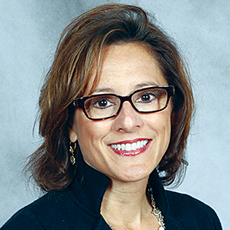
When the Centers for Medicare & Medicaid Services announced in July that it was implementing a system of bundled payments for knee and hip operations in 75 geographic areas of the country, it prompted CFOs and accountants at many skilled nursing facilities to ask themselves an awkward question: What is our share of the episode cost to CMS, and what does this procedure actually cost us?
Unfortunately, not many had a ready answer. The reason is that even though there are a plethora of sophisticated accounting and electronic health record platforms available in today’s market, most of them are not yet able to link cost data with utilization of services information.
But being able to connect the dots and then slice and dice this data will be crucial to all SNFs in the future, not only to meet the demands of bundled payments programs such as the one unveiled by CMS, but also to enable SNFs to find hidden pockets of excess costs in their operations and eliminate them.
While it’s true that many SNFs currently use Medicare Cost Reports that contain reams of data about their revenues and costs as their benchmark for how well they are doing, the MCRs are not sufficient in today’s environment and will be seriously lacking for future demands that are just now taking shape.
Here’s one reason why: Most SNFs treat health plan patients as well as Medicare patients. But some health plans’ reimbursement rates to providers aren’t the same as the RUG rates used by Medicare, and they simply opt to pay a flat fee for treatment. The challenge for every SNF is to find out if this flat payment is sufficient to cover its costs.
By carefully analyzing its cost and utilization data, a SNF can track a lot of excess costs that may have escaped attention. For example, it could find out that one particular doctor has a habit of ordering tests that are over and above the experience of others. With sufficient data, the facility would be in a good position to ask the doctor if there is another protocol he or she could use before ordering these additional tests. The key takeaway: you need to isolate trends by patient diagnosis, health plan, doctor and referring hospital.
Similarly, in the bundled payments landscape, the lump-sum target from CMS is designed to align the incentives for all of the providers, from hospitals to doctors, home care and SNFs. That means each of these players will be looking to capture a share of the cost savings and will need to know exactly what the expenses are for each step of the process.
In today’s world, your referring partners are critical relationships. You need convincing data to demonstrate your effectiveness compared to peers and show what a great partner you are.
How can you get up to speed? It’s important that a SNF be committed to collecting data uniformly and consistently. That means on the front end recording not only the referring hospital and health plan, but the referring and admitting physicians’ names as well as what diagnosis the patient was given in the hospital before being released. This all-important link, which is known as the Medicare Severity Diagnosis-Related Group, or MSDRG, is the key connector to episodic payments.
SNFs should also consider protocols to collect patient medical record information from referring hospitals and available health information exchanges. These practices will help to facilitate cost effective utilization of services.
A second important step for SNFs is to ensure that revenues and expenses are recorded uniformly, and in sufficient detail to analyze trends by payer. Many facilities utilize accounting and general ledger systems that are simply not sophisticated enough to provide the cost accounting capabilities required in today’s environment.
With thorough front-end patient databases, detailed and uniform accounting procedures, and a good old-fashioned Medicare cost report, the average SNF should have access to all of the key data needed to manage your business.
The problem is that most SNFs today aren’t collecting all this data in a uniform way, and are not devoting enough resources to development of these systems. The sooner you give thought to this process, the quicker you will see big results on the back end.
Betsy Rust, CPA, is a consulting partner with Plante Moran’s senior care and living practice.



